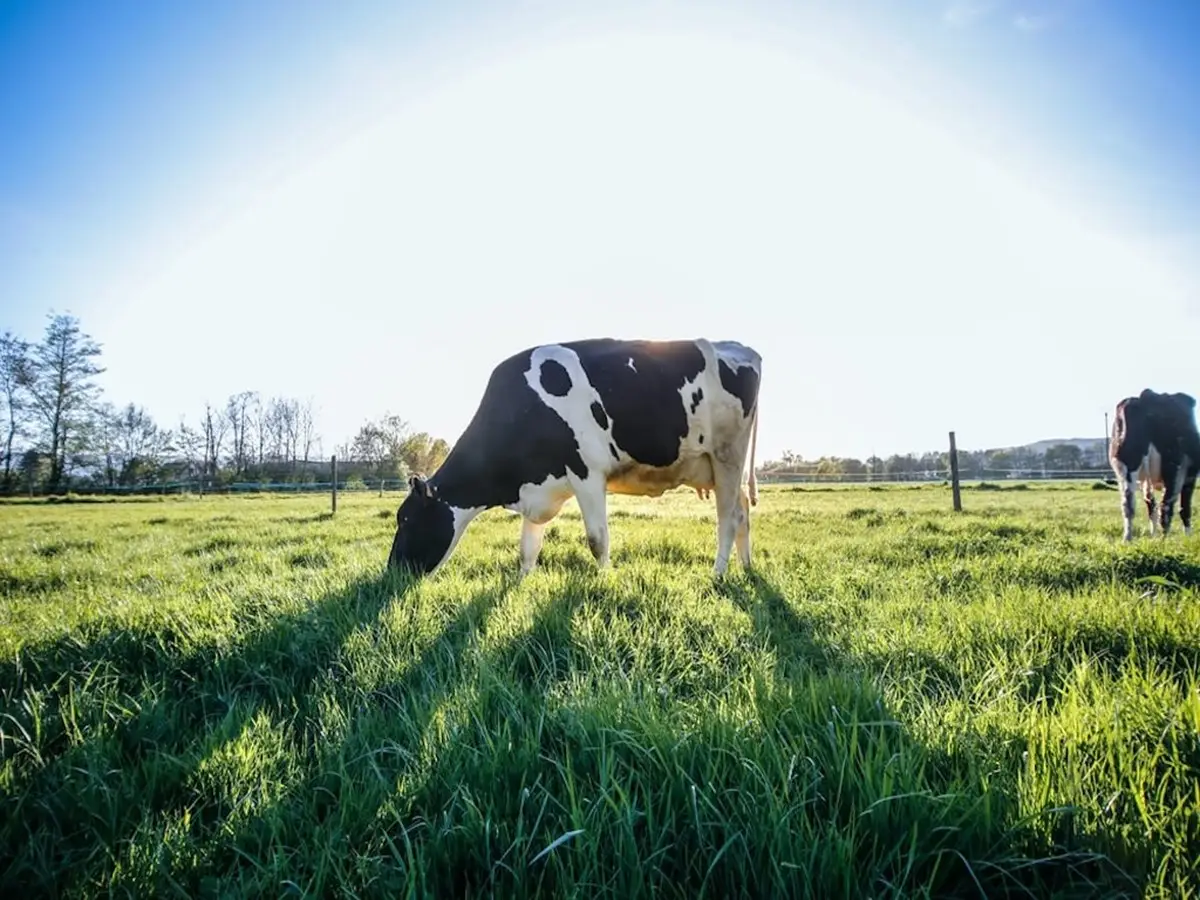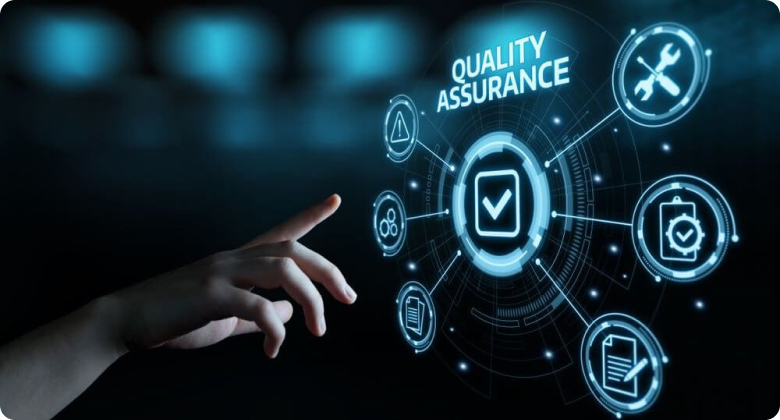In today’s rapidly evolving world, the Internet of Things (IoT) has found its way into various industries, revolutionising how we manage and monitor processes. The livestock industry is no exception, as IoT solutions offer remarkable advancements in tracking the behaviour and health of animals. With the integration of IoT and smart farming practises, farmers can now gain valuable insights into their livestock, optimise their operations, and enhance overall productivity. This blog explores the diverse applications of IoT in livestock management, specifically focusing on tracking and health.
IoT Livestock Tracking Systems
1. RFID Technology for Livestock Identification
Radio Frequency Identification (RFID) technology plays a crucial role in livestock management. Farmers can easily identify and track individual livestock by attaching RFID tags to them. These tags contain unique identifiers that can be scanned using RFID readers, providing real-time data about the animals’ movements and locations. The benefits of RFID technology include improved inventory management, efficient record-keeping, and enhanced traceability throughout the supply chain.
2. GPS Tracking for Livestock Monitoring
GPS tracking offers valuable insights into livestock behaviour by accurately determining their location and movements. By using GPS-enabled collars or ear tags, farmers can monitor animals’ grazing patterns, identify potential escape routes, and ensure their safety. GPS tracking also aids in optimising pasture management and preventing overgrazing. Moreover, it enables farmers to quickly locate lost or stolen livestock, saving time and resources.
3. Sensor-Based Monitoring for Livestock Health
Sensors are revolutionising livestock health monitoring. These devices can be embedded in wearable tags or deployed in the environment to collect data on vital signs, temperature, activity levels, and other health parameters. Sensor-based monitoring systems provide real-time information on the animals’ health status, allowing farmers to detect early signs of diseases, promptly administer treatments, and prevent outbreaks. This proactive approach helps improve animal welfare and reduces the risk of economic losses.
Behaviour Tracking with IoT Solutions
1. Monitoring Grazing Patterns and Foraging Behaviour
Grazing patterns and foraging behaviour significantly impact livestock nutrition and overall health. IoT solutions enable farmers to track and analyse these patterns, helping them optimise pasture utilisation, manage forage resources efficiently, and prevent overgrazing. By monitoring grazing behaviour, farmers can make informed decisions about rotational grazing, ensuring that animals have access to quality forage while maintaining the long-term health of pastures.
2. Tracking Movement and Resting Patterns
Movement and resting patterns provide valuable insights into livestock well-being. IoT solutions equipped with accelerometers or motion sensors can capture data on the animals’ activity levels, exercise routines, and resting behaviours. Analysing this information helps farmers identify abnormal behaviour patterns that may indicate illness, stress, or discomfort. By promptly addressing such issues, farmers can ensure timely intervention and improve the overall welfare of their livestock.
3. Analysing Social Interactions and Herd Dynamics
Social interactions and herd dynamics significantly affect livestock behaviour and stress levels. IoT applications can employ various technologies, such as proximity sensors, video monitoring, or sound analysis, to track and analyze social interactions within a herd. Understanding social hierarchies, herd cohesion, and individual animal relationships allows farmers to optimize grouping strategies, minimize aggression, and create a harmonious environment that positively impacts animal well-being.
IoT Solutions for Health Monitoring
1. Early Detection of Disease Symptoms
Early disease detection is crucial for effective disease management. IoT solutions facilitate continuous health monitoring by collecting data on vital signs, temperature, and other relevant health parameters. By employing machine learning algorithms, these systems can detect deviations from normal patterns and send alerts to farmers, enabling them to take proactive measures. Early detection improves animal health outcomes and reduces the risk of disease spreading to the entire herd, minimizing economic losses and preventing potential outbreaks.
2. Tracking Body Temperature and Vital Signs
Monitoring body temperature and vital signs is essential for identifying health issues in livestock. IoT solutions offer non-invasive methods for collecting temperature data, such as wearable sensors or thermal imaging cameras. Farmers can quickly detect signs of illness, fever, or stress by continuously monitoring temperature and other vital signs, enabling timely intervention and appropriate treatment. This proactive approach ensures better health outcomes and reduces the risk of severe health complications.
3. Smart Feeders and Water Management
Livestock nutrition and hydration are critical for their overall health and performance. IoT solutions, such as smart feeders and automated water systems, provide precise and controlled feeding regimes. These systems can be programmed to dispense feed and water based on individual animal needs or specific time intervals, ensuring consistent access to nutrition and hydration. By optimizing feeding schedules and monitoring consumption patterns, farmers can prevent underfeeding or overfeeding, improve feed efficiency, and promote optimal growth and health outcomes.
Implementation Challenges and Considerations
1. Data Privacy and Security
With the integration of IoT solutions, data privacy and security become crucial considerations. Livestock management systems collect vast amounts of sensitive data, including animal health records, location information, and behavior patterns. Implementing robust data encryption, secure communication protocols, and access controls are essential to protect this information from unauthorized access and potential data breaches.
2. Connectivity Issues and Network Infrastructure
IoT solutions heavily rely on a stable and reliable network infrastructure to transmit data in real-time. Limited connectivity can pose challenges in remote rural areas, where livestock farms are often located. Establishing a robust network infrastructure, including stable internet connectivity or deploying local networks, is essential for seamless data collection and transmission.
3. Cost and Scalability of IoT Livestock Management Systems
Implementing IoT livestock management systems involves upfront costs, including purchasing sensors, tags, infrastructure setup, and data management platforms. Farmers need to assess the return on investment and determine the scalability of the solution based on the size of their operations. Collaborating with technology providers, government initiatives, or seeking funding options can help mitigate financial barriers and make IoT adoption more accessible for farmers.
Conclusion
Integrating IoT solutions in livestock management offers transformative benefits for farmers, enabling them to monitor behavior and health in real-time. Farmers can gain valuable insights into grazing patterns, movement behaviors, and social interactions through RFID technology, GPS tracking, and sensor-based monitoring. By implementing IoT solutions for health monitoring, farmers can proactively detect diseases, track vital signs, and optimize nutrition and hydration. Despite implementation challenges, the potential of IoT in livestock management is significant, with improved animal welfare, better farm productivity, and enhanced sustainability.
FAQs
- How do IoT solutions contribute to smart farming practices?
IoT solutions in livestock management provide real-time data on animal behavior and health, enabling farmers to optimize resources, enhance productivity, and make informed decisions for sustainable farming practices.
- What are some potential risks of implementing IoT in livestock management?
Risks associated with IoT implementation in livestock management include data privacy concerns, network connectivity issues, and initial investment costs. However, these challenges can be mitigated with proper planning, security measures, and strategic partnerships.
- Can IoT technologies be integrated with existing livestock management systems?
Yes, IoT technologies can be integrated with existing livestock management systems. Compatibility and seamless data integration should be considered during the implementation process to ensure a smooth transition and maximize the benefits of IoT solutions.
- Are there any ethical concerns regarding IoT livestock tracking and health monitoring?
Ethical concerns in IoT livestock tracking and health monitoring revolve around the responsible and humane use of the technology. It is important to prioritize animal welfare and ensure that data collected is used for the betterment of livestock health and not for invasive or harmful purposes. Implementing proper protocols and guidelines for data usage and respecting privacy rights are essential in addressing ethical concerns.
- How can farmers overcome the challenges of implementing IoT solutions for livestock management?
Farmers can overcome implementation challenges by conducting thorough research, seeking guidance from technology experts, and collaborating with industry peers. Government initiatives, subsidies, and funding options can also support farmers in adopting IoT solutions. Furthermore, investing in reliable network infrastructure and prioritizing data security measures are key steps to ensure successful implementation.



